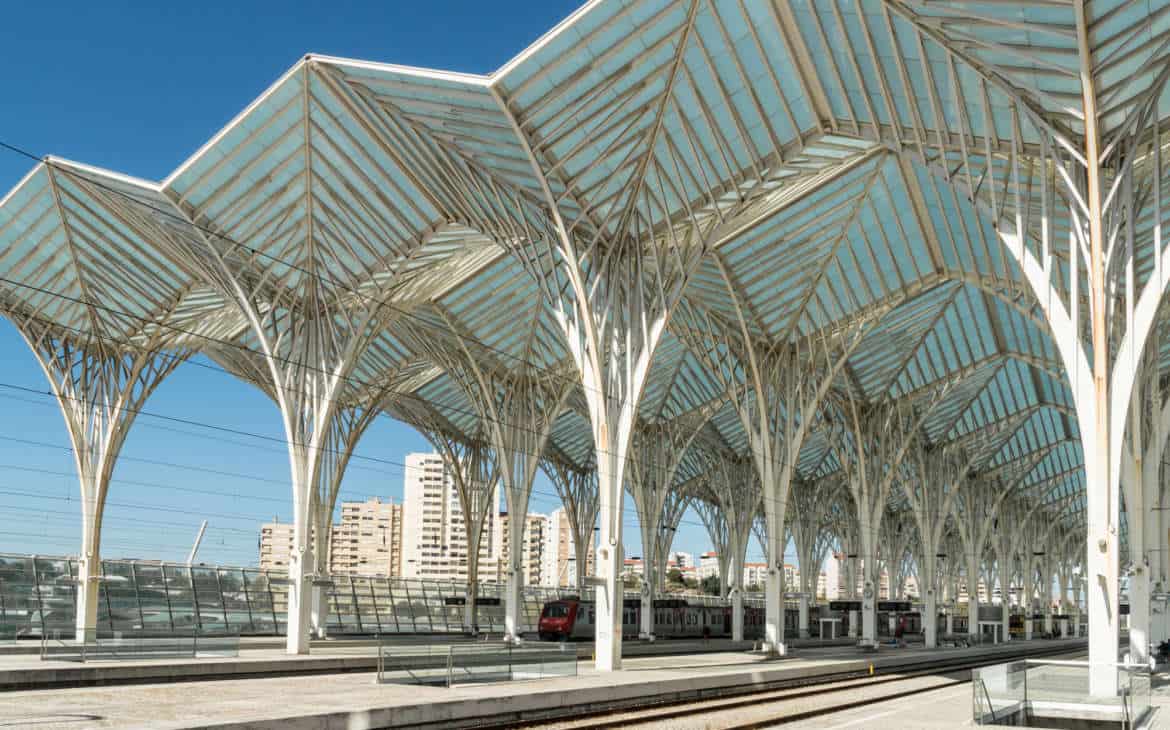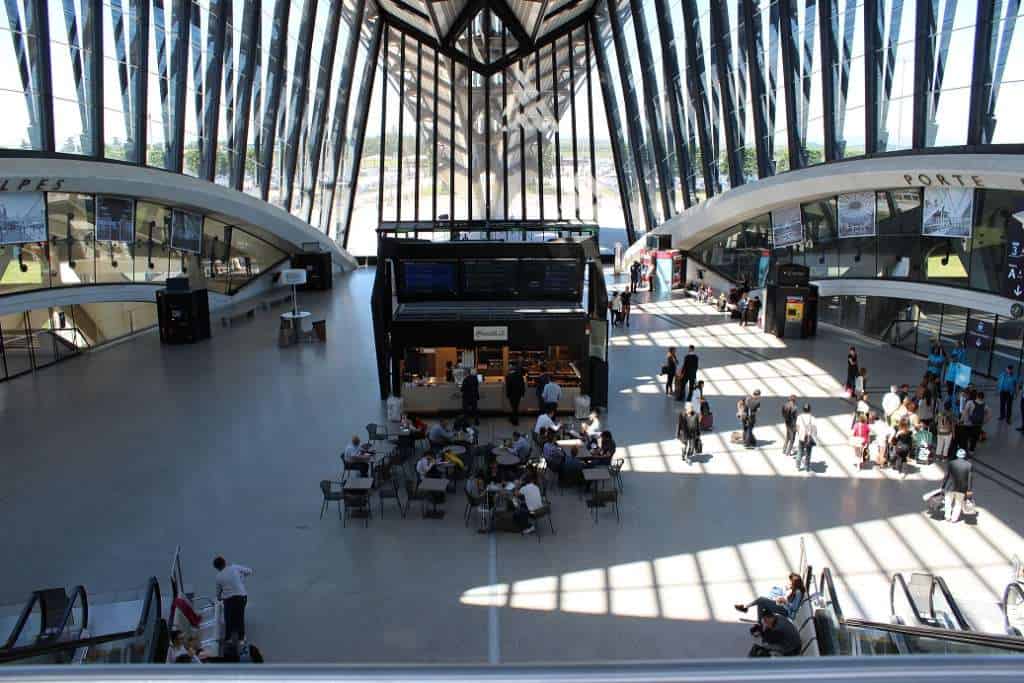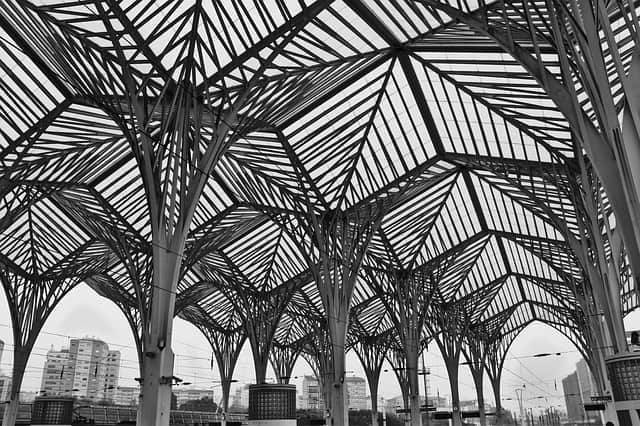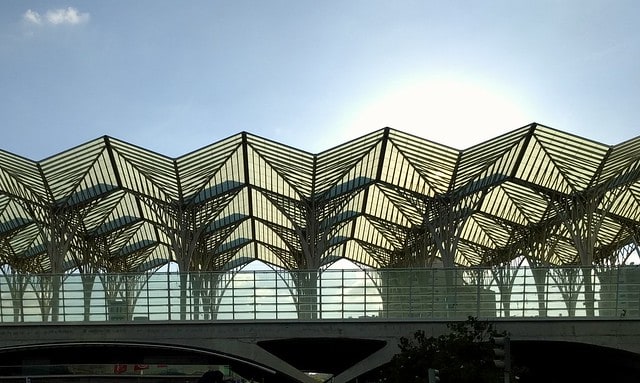Lisbon is a city of monuments and architectural gems, but not all of them date back to ancient times. The Portuguese capital is also regarded as a pearl of utilitarian architecture, the crowning glory of which is considered to be the Gare do Oriente. Located virtually in the heart of Lisbon, the station serves 75 million passengers a year.
Construction history

In 1994, the station was to be proposed as part of the Linha do Norte modernization, a modification of the main rail network to facilitate future development. Located along Avenida Don João II, above Avenida de Berlim and Rua Conselheiro Mariano de Carvalho, the building was to occupy land once occupied by Apeadeiro dos Olivais, which was demolished in the 1990s to make room for future construction. Bids for the ambitious project were solicited from around the world. The competition and the selection of a winner were widely debated in the media – few in Lisbon were determined how the largest station should ultimately look. In 1995, the commission finally chose the original concept by Spanish architect Santiago Calatrava, and the Necso finishing company was named as the main contractor. The grand inauguration of the railroad station took place on May 19, 1998, as part of the opening celebrations of the World Expo ’98. The event lasted more than a hundred days, and its slogan was: “Oceans, Heritage for the Future.” At the time the work began, it was the largest intermodal station in Portugal.

Lisbon Oriente station as seen from the Vasco da Gama shopping center
Architectural details

Oriente Station is located in an urban area, in the civil parish of Parque das Nações from reclaimed, mostly abandoned industrial buildings, facing the north bank of the Tagus River, about six kilometers from the city center. Ambitious in its conception, the modernist structure includes not only a regional railroad hub, but also a Lisbon metro station, a local, national, or international bus station, a shopping center, and a police station. The station was designed with a so-called multimodal platform crossing the cardinal axes for different modes of transportation. In addition to the many galleries that are an integral part of the space, it is connected to Centro Comercial Vasco da Gama via underground access, as well as a second floor connection to the platforms and pedestrian walkway.

Gare de Lyon Saint – Exupéry – are they similar? photo: garesetconnexions.sncf
With some influence from Gothic architecture, the station is very similar to the Spanish artist’s earlier works. Notable among his projects are Toronto’s Allen Lambert Galleria on Brookfield Place, the Milwaukee Art Museum, the Gare de Lyon Saint – Exupéry, the Auditorio de Tenerife “Adán Martín,” Valencia’s Science Museum, the Bodegas Ysios winery in Basque Laguardia, the Turning Torso, and Bilbao’s airport. Santiago Calatrava’s goal was to create a new space with ample space and functionality providing multiple connections between different zones in the metropolitan area of the Iberian capital.

At ground level, the main entrance to the station is on the east side, under a large cantilevered canopy. Two footbridges connect another floor of the station to the Vasco da Gama shopping center across the street. The main entrance leads to the inside of the structure, the so-called platform section, which replaced the former railroad embankment. Here, what draws attention are the arches, ribs and portals very similar to the inspiration of Catalan Gaudi. This austere, disturbing and beautiful creation that blurs the boundaries between engineering, sculpture, architecture. It houses ticket offices, stores, services, and food and beverage outlets inside. Rarely do you see this level of architectural input on a seemingly quite ordinary bus station. Long transparent canopies protrude from the stairs and glass elevator shafts that lead down to the islands for boarding means of transportation. Access to the platforms is facilitated by a revised road layout designed by Calatrava. At the top level, the train tracks are sheltered by one of the most dramatic rooftops of contemporary commercial construction a tourist may ever see on his or her way. Resting on a fifteen-meter-high grid, columns reach up to the transparent roof, and bracketing brackets form gothic, pointed shapes. The whole thing is deceptively reminiscent of solutions from Barcelona’s Sagrada Familia temple.
Trains and buses from Oriente Station
Lisboa Oriente is the largest train station in Lisbon. Reaching it will allow us to reach both the south of Portugal (to Lagos, Portimao or Albufeira), but also the north of the country (to Porto or Braga). Both Portuguese railroad trains (Comboios Portugal – cp.pt) and Rede Expressos buses depart from it.
How to get from the airport to Lisboa Oriente train station?
Here is a brief overview of how to get to this station from Humberto Delgado Airport.
How to get from Lisbon airport to Lisboa Oriente train station by bus?
The most common service between Oriente station and Lisbon airport is by bus. Both places are connected by lines 705, 739, 750 and 744. A ticket purchased from the driver costs 2 euros, if you have a Viva Viagem card the cost is 1.50 euros (+0.50E for making the card if you do not have one). At the driver we will pay only in cash, the machines accept payment by both cash and card.
How do I get from the airport to Oriente Station by subway?
Since the new line was completed in 2012, the fastest way to get from Lisbon airport is by metro. The metro station is right at the entrance to the airport (there is a large parking lot behind the entrance, hard to miss:). The airport and Oriente are connected by the Linha Vermelha line in the direction of Sao Sebastião. There are two stops between the airport and Oriente, and the trip takes about 6 minutes. To get to the metro station, a Viva Viagem card “rebound” is required. Thus, for a single ticket you will pay €1.50 + €0.50 as the cost of making the card if you do not have one.
How much does it cost to take a cab from the airport to Oriente Station?
The cost of a cab ride from under the airport to Oriente is usually from 6-7 euros.
Fot: Martin Gomez, wiki
